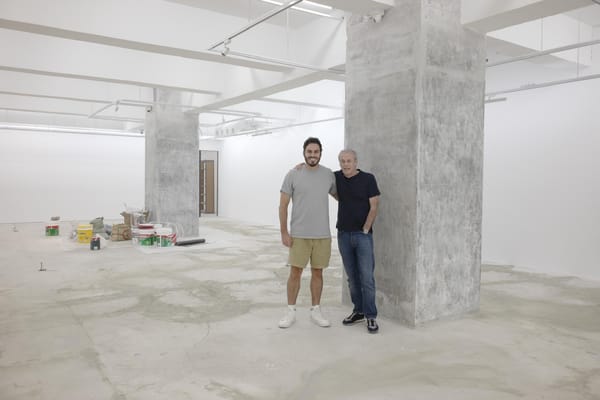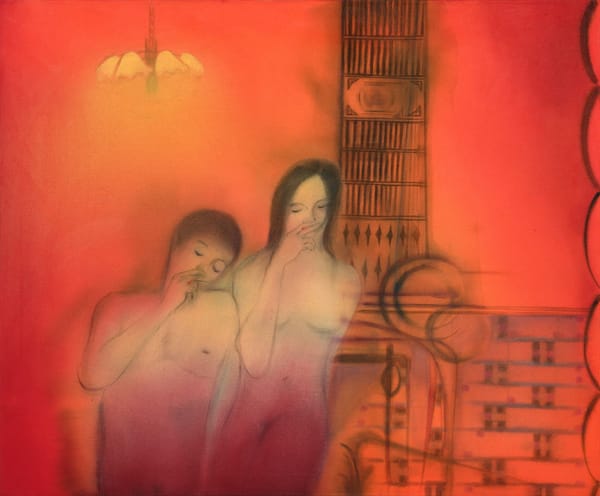People
Totality of Experience: Interview with Wolfgang Tillmans (Part 2)


In recent years, Wolfgang Tillmans has engaged himself in trans-Atlantic conversations about the spread of misinformation and nationalist sentiments through conservative media, as well as the intersectional discourse emerging in the United States around race, queer identities, and sexuality. In April 2016, he released a series of posters in support of the Remain camp on the Brexit referendum, with slogans such as “No man is an island. No country by itself” and “What is lost is lost forever,” several with images of the sky in the background. In the second part of this interview, on the occasion of his exhibition at David Zwirner Hong Kong, Tillmans speaks about his relationship to landscape imagery, the utopic aspirations of clubbing, and the conversations happening around race and gender in art and culture at large. Part one of the interview can be read here.
Your posters for the anti-Brexit campaign featured natural imagery, even if it was just the view of the sky or clouds from a plane, and your show at David Zwirner Hong Kong features very dramatic landscape photographs, such as an aerial view of the desert in Sahara (2018), and a storm seen from the shore in Wolkenbruch (2017). As a photographer, do you still feel that you are able to capture the power of the natural world? To represent this unmediated experience between yourself—or us—and nature?
I feel fortunate that I grew up in postmodernism without knowing the word “postmodernism.” When you are a teenager in 1984, you don’t know what postmodernism is—but, of course, it was all around us. So, non-linear identity and the idea of being composed of different ingredients was something I had always intuitively understood. I always had a post-authenticity understanding of photography. In the ’90s, when the term “authentic” was thrown around, I always rejected that—I said, “No, my pictures are all, in some way or other, a fiction,” but they are all authentic to my intentions.
About this question of capturing nature and the sublime, I’m aware, of course, that a sunset or a nature scene is something that is over-described and determined. On the other hand, I don’t care—because it is amazing. It is overly described and much depicted because it is special. My general approach is always the question: “Can I do this? Can I make a picture of this?” while knowing how difficult it is to create those images today.

What interested me in the seascapes, as well as what I call vertical landscapes, which found their way into the Brexit posters, is this interest in borders—between the cloud surface and the sky, the water surface and the sky, and clouds versus other clouds. There were always distributions of space [to consider]. Some pictures, like the seascape in the Tate Modern, titled The State We Are In (2015), with an imposing, dark surface of the Atlantic that seems about to erupt, act as a metaphor for the potential political climate. Others, like Wolkenbruch, I don’t see as a direct description or metaphor for anything.
Sahara was really a way of looking at the earth from an astronaut’s perspective. I was so struck by seeing what I never imagined I would see. Each of these little heaps is actually gigantic—1.5 kilometers in width. There is an element of scientific observation to it. It is all mediated: it is at the limit of what is technically possible, yet the image wasn’t produced with any special effects. I didn’t use a rocket, or a helicopter; it’s taken from a commercial airplane. But what also makes it striking is that it’s not perfect. It’s not a NASA or National Geographic picture. It speaks about the light, temperature and the shadows of the dunes, some of which have this purple hue because shadows are blue in color. The haze at the top is a bit of humidity, which, surprisingly, is present in the Saharan air. It makes the whole thing ultimately an abstract composition, and, at the same time, hyperreal.
It struck me that two images, the post-clubbing picture titled Love (Hands in Hair) from 1989 and Hand on Ankle from 2018—a close-up of someone clutching their own ankle—were another kind of pairing or bracketing, similar to the 1993 and recent images of Hong Kong. Is there a comment on the loss of intimacy now, whether due to age or changes in lifestyle in the neoliberal era that this exhibition spans? Do you think the kind of freedom of intimacy and joy has somehow been reduced to this close-up of someone holding themselves, and not being touched by another hand?
I think that’s a well-observed connection, though it’s not intentional. I totally consider that a valid observation and perhaps it is linked to why, in 2018, I chose to show these two “Love” pictures from ’89, both here in Hong Kong and at my anniversary show in Galerie Buchholz, Cologne, in February, which marked my 25th year of working with gallerist Daniel Buchholz. I felt a sense of time, and decided, “Let’s do a prequel,” showing works that were not in my first exhibition at Galerie Buchholz but rather one from four years prior. In those photographs, there’s this sense of acceptance, and a lack of fear towards one another—just the warmth of being in one’s body. That is something I have been attracted to all my life. It’s super relevant today, so I did make a deliberate choice to include those pictures. Also, because a lot of people who are currently interested in my work hadn’t been born then, I wanted to insist on a continuity between then and now, to say that this is not over. This is only over if you let it be over.
Back then, I always ascribed incredible political importance to clubbing, particularly the non-hierarchical clubbing that came with house and techno, even though it was considered hedonistic and superficial. I always felt it was radically new in the course of humankind. Of course, clubbing is not a solution for the world’s problems, as it might have seemed back then. But it takes us back to our relationships to our bodies. Our fear of our own and others’ bodies is at the core of all the ills of the world for me: the religious control or male domination of bodies.
In the show, there is a tiny photograph titled Fuck Men (1992) showing a t-shirt that I printed with a flyer that I picked up in San Francisco in 1990. It reads, “They don’t aim to destroy their selves [sic], they aim to destroy you and me. Fuck men! Fuck male domination! The freedom we seek: to live, to love, to do.” That was in a double-page spread in i-D magazine in ’92, the opener of an eight-page story that also included one of my famous pictures, Lutz and Alex Sitting in the Trees (1992). That whole story had a gender-political angle, and was about the playful togetherness of men and women. It’s like what I said earlier about the continuity of my interests. I’ve always been interested in and pursued the same things and the same values. Back then, the political nature was lost on some—though not all; but now, I just see all of that togetherness under threat. Maybe that’s why I “bracketed” the exhibition like I did.

I was wondering if your thinking about how to depict women and people of color in your work has changed in light of wider conversations about the dynamics between men, women and people of color in the cultural world? Do you feel any new self-consciousness in representing people?
There is an aspect of that, yes. I look at men and women differently. There is an aspect of desire, and being gay; depicting men has an erotic component, as in that ankle picture. On the other hand, I don’t see every picture of a male with a gay gaze.
As for race, I’ve forged new connections with New York and Los Angeles since 2013 and 2014, having spent more time there. I initially had a sense that perhaps for the first time, America was really coming to terms with its past. A couple of years later, it is now overly clear that there’s a complete catching-up with what had not been dealt with before. But the fact that I photographed Frank Ocean wasn’t a choice because of the color of his skin. Yulan Grant was part of a group of queer artists and activists that Susanne Oberbeck proposed to me for a set of portraits for a London magazine, Man About Town. There was a naturalness there that wasn’t determined by skin color.
Going back to that picture of the t-shirt included in i-D—that’s really what I believe in. I have genuinely been a feminist all my life, and the importance of anti-racism—or to turn it the other way around, the ludicrousness of racism—is glaring to me. It has been at the forefront of my consciousness so much more so in the past five years, particularly as I’ve traveled so extensively over that period and worked directly with people from different continents on projects and exhibitions, and seeing how beautiful and similar we all are. I just think racism is so outrageous that it does need to be spoken about. But I don’t feel I shouldn’t photograph people of color. It’s a natural mix of who interests me, of who I meet and who I seek out.
Before you catch your flight, is there anything else that we should discuss about your Hong Kong show?
One thing we haven’t spoken about are my still lifes. People always think I photograph the everyday. That is a misconception, because I make or stage pictures as much as I find them. And what I stage, I make it look as if it just is or was there. Sometimes, what is actually just there, I photograph as very extraordinary. This re-evaluating of things, and constantly crossing them, is really at the heart of my visual strategy, as is a sense of playfulness and the absurd.
For example, with Freezer Still Life (2017), a writer stated that this is an image of anyone’s fridge. That is so not well-observed. Because who’s freezer looks like that? Who puts an egg into the freezer? There’s all kinds of weird stuff in there. There is a playfulness—a sort of challenging or undermining of what is normal and what is not in the distribution of things across the picture’s surface. The border between what’s staged and what is not is very fluid. Just like in life, we are not always in control. I guess I’ll leave you with that thought.

HG Masters is ArtAsiaPacific’s editor-at-large.
This interview has been edited for clarity and length.
Wolfgang Tillmans’ solo exhibition is on view at David Zwirner, Hong Kong, until May 12, 2018.







